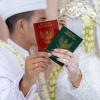Rotating Hyperspherical Universes in Einstein-Cartan Cosmology: Resolving Hubble and Curvature Tensions through Torsion-Driven Bianchi Models
Abstract
Recent observations in cosmology, including the Hubble tension, cosmic curvature tension, and large-scale anisotropies in the Cosmic Microwave Background (CMB), challenge the standard CDM paradigm. In this paper, we explore a class of rotating hyperspherical universes described by anisotropic Bianchi type IX metrics within the Einstein-Cartan framework, which incorporates intrinsic spin and torsion. We derive modified field equations that accommodate global rotation and analyze their dynamical behavior under realistic initial conditions. Our results indicate that torsion-induced angular momentum can account for observed anisotropies and reconcile divergent measurements of the Hubble constant and spatial curvature. We further propose a mechanism of multiverse-induced external torsion, offering a thermodynamically consistent interpretation of vacuum energy imbalance. This approach not only offers an alternative to the isotropy assumption but provides a physically motivated extension of general relativity with implications for the early universe and the structure of the multiverse. Observational predictions and possible signatures in future CMB and large-scale structure surveys are discussed.
Outline
1. Introduction
The rise and limitations of CDM
Overview of Hubble and curvature tensions
Role of anisotropy and cosmic rotation
Motivations for torsion and Einstein-Cartan theory
2. Theoretical Framework
Review of Einstein-Cartan gravity







